Accurate projections for player performance once were the Holy Grail of DFS, the crux of success and the primary concern of top-ranked players. Used in conjunction with game theory and diversification strategies, accurate projections will give you the best chance of coming out ahead in all your tournaments. But now that you can get elite projections for an affordable amount, the DFS landscape is changing: you can be successful without spending hours a day immersing yourself in a sport and grinding on your Excel spreadsheets. Many top-ranked DFS players even do not create their own projections for every sport they play. I know that because I can accurately predict their cash lineups each night.
When I started playing DFS, accurate projections were not readily available, so I was able to make a good return in contests simply by developing my own projections. I realized within days of playing the severe limitations of projection sources when I saw guys in a Coors Field game projected to be bad plays when sportsbooks had it as the highest scoring game. In 2020, there are limitations to projection sources but the commercialized ones can be pretty good. While making projections was once an essential skill to crush DFS, it’s no longer necessary to make a prime focus.
https://www.instagram.com/p/B7rAHxGAfWI/?utm_source=ig_web_button_share_sheet
The safest route to go with projections is to use mine because they are proven by the money I invest and the return I have earned; as one of the foundations of my process, you can be sure that they are good enough to make money at any level. But when thousands of people have access to them, it’s wishful thinking that you can rely solely on picking lineups with the highest projected score and make money. You need to add in a little analysis and strategy of your own to differentiate from the competition. Now that the field is sharp at finding the best plays, there are two options: try to figure out errors in the industry consensus or rely more on other edges in lineup construction.
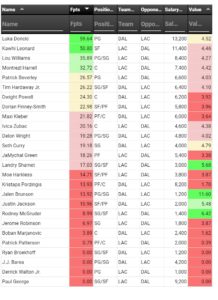
The most obvious ways to build lineups other than solely based on projections are to account for ownership and correlation (depending on the sport). Because most lineups in GPPs are built by optimizers, it’s easy for people to build lineups that are filled with strong values but it’s challenging for people to account for multiple factors at once. As a result, I think the highest projected lineups are usually suboptimal in tournaments barring unusual circumstances. It’s better to identify lineups that are relatively strong considering all factors while ones optimized solely based on projection tend to be too heavily owned.
Aggregating Projections
Averaging multiple projection sources, aka aggregating projections, is a popular strategy in DFS. Aggregating can be valuable because if you create and evaluate a large amount of lineups with the same set of projections, you’re introducing additional biases in your process. The most obvious is that if you restrict how much exposure you can have to players, lineup one will have all of the best plays, lineup two will have the second tier, etc. The problem is this cycle will repeat indefinitely, causing all of your preferred plays to clump together and those lineups to stand out as the best you generate. When you use different projections to optimize and choose your lineups, it mostly solves this problem.
There is also a theory that when you average together multiple opinions, the consensus is a stronger prediction than any of the individual ones. I’m a bit more skeptical of the value of this analysis because it’s subject to certain biases. For example, in NBA where projections are a more heavily weighted factor than other sports, I like to project situations where guys that are questionable as the middle of both possibilities. If you only consider players that end up playing, that will make my projections look inferior to others, while if you consider every player in the player pool they will look superior.
The biggest limitation of projections is that they can’t account for multiple scenarios. For example, if a player is questionable, half of the time they will get a zero, half of the time they will be in play. The way I approach this situation depends on if I can late swap. If the game is late swap, I like assuming the best possible situation for each player but not putting conflicting scenarios into the same lineup. Then I can swap to the right scenario if my lineup is obsolete with the most recent information. Ideally, you can put the time into updating each by hand but when time is limited I like to use the Late Swaptimizer on Fantasy Cruncher to reoptimize my lineups.
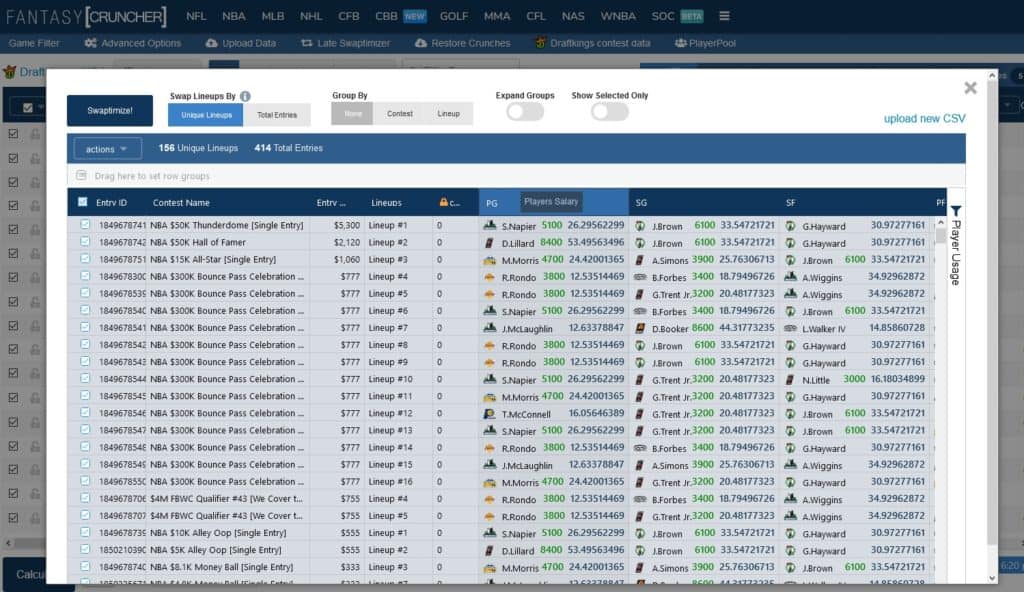
On sites without late swap, I like playing the average of both scenarios because then I’ll get some exposure to the parlays where I guess the injury situation right. I prefer playing the player that will benefit from another teammate’s absence because in the worst case, you’ll have a chance. It’s riskier to lock in a questionable player hoping that if they play they will go off because it drastically reduces your chances of placing in the money the half of the time they don’t. The problem is that many players are overconfident in their ability to predict these situations, and the bias in the industry is clear that people like to assume the questionable players will play.
Utilizing Sports Betting Markets
There’s a large barrier to entry to creating your own model because the strength of your model must exceed a certain threshold of accuracy for it to be a net positive in your process. The ceiling is much higher using this method though because there’s a lot of value in having the most accurate projections. The easiest way to start your model is by using Vegas to your advantage. Sportsbooks are a vital source of information for modeling unfamiliar sports. Since the books are willing to take money on set odds, you can infer much from the bets they offer. Incorporating figures like team totals into your model for fantasy sports is a great way to simplify the problem you’re trying to solve. These odds are subject to certain biases but in high liquidity markets like over/unders and moneylines, they can be very useful.

The process of creating a game total or a moneyline is known as handicapping. Sportsbook employees, with complex algorithms in hand, set the opening total or line. Yet the true accuracy of Vegas doesn’t originate with a single algorithm or even the collective efforts of all sportsbooks. Vegas owes its accuracy to highly sophisticated sports bettors who are identifying inefficiencies in betting markets and taking advantage of them. These guys put down a ton of money on the lines which balances out the public being more interested in one side or the other.
Sportsbooks set the line at whatever will make them the most money, so a high volume of money being placed on one side of the bet will change the line the sportsbooks offer for subsequent bets. The more money they allow on each bet, the more efficient the lines will be as professionals make up a higher percentage of the total bets. The accuracy of betting lines is maintained as information continues to emerge, for example, in the form of player injury or weather updates. In fact, this is probably the greatest benefit of using betting lines — the wealth of information that is incorporated into a single line, meaning fewer factors that you will need to adjust for in your own model. To get the full benefit of this information, you should update these numbers close to game time, when they are the most accurate.
Don’t forget to follow us on Twitter!
Because the margins of error at any given time are small, these bets are reliable sources of information. For example if an NBA game has an over-under of 215 and a spread of -3 favoring the home team you can deduce that the away team is expected to score 106 and the home team 109 (these numbers are often referred to as “implied team totals”). Furthermore, you can use implied point totals to make educated guesses about the pace of play and other stats. It’s also important to consider the odds offered on each bet. You should adjust the numbers you use in your spreadsheet towards whichever side has odds further in the negative. For instance, in the NHL, if the over/under is 5.5 with the over bet being -125 and the under being +105, you know the true average projected is slightly above 5.5. You can calculate exactly how much to adjust it by a comparison of different sportsbooks over time because they don’t always have the line set at the same number.
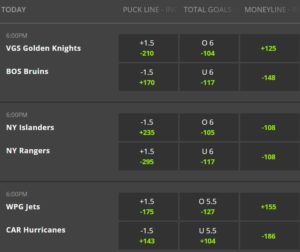
Applying Advanced Statistics
Once you estimate the statistics for the entire game, you can compare those to a team’s average performance and adjust individual players expected performance accordingly. The baseline for players’ projections should, of course, be their historical stats. Although traditional per game or per minutes stats work well, to gain an edge, you’re going to want to sprinkle in some advanced/non-traditional statistics. Some of these may have superior predictive value compared to actual events in a game, but others may be worthless. Advanced stats can be a great way to get more data points in your sample; e.g. swinging strikes vs. strikeouts. Since there are more pitches than at bats in a game, you have more information to work with.
There is a plethora of advanced statistics available, but the most important thing is knowing exactly how a stat is defined because many don’t mean what you would think. An example is touches in basketball. You’d think it would be how many times a player possesses the ball, but the reality is that it’s arbitrarily defined as an amalgamation of shots, turnovers, free throws, and assists. While it can be interesting to talk about, it is difficult to apply to a projection. Some sites even use different calculations for the same stats! One example is pace of play in NBA, which has several different definitions depending whom you ask. When you use that stat, you must make sure that the definition is consistent between different stat sources you use.

Finally, once you create your projections, you’ll want to check them against other sources. Even the best-prepared DFS players miss information that significantly impacts projections. Your best reference point is sports book player props. Now that sports betting is legalized in the US, sports books like DraftKings offer many of these bets because they appeal more to DFS players. These can cover things like passing yards for quarterbacks or points for a NBA player. These numbers are informative as they wouldn’t be offered if they were easily outsmarted. However, these bets should not be treated with the same degree of respect as team totals or moneylines because the market for them is less efficient than traditional bets. Prop bets aren’t as ubiquitous, sportsbooks cap the dollar amount of each bet and they ban sharp users. As a result, they don’t have same accuracy a game total has.
Summing Up DFS Strategy
The dream in DFS is having the most accurate projections all to yourself because you can have a great idea who everyone else is on by keeping up to date with industry content. If you are confident in why your projections differ from other sources, you can exploit the so-called wisdom of the crowd. While this is theoretically possible it’s a pipe dream and it probably isn’t the most lucrative way to invest your time. Developing your own projections is certainly not a prerequisite to success and in many cases may be more trouble than it’s worth.
DFS players want to outsmart the field by picking better players than everyone else, but as more and more people have access to accurate information, the game is changing. It’s becoming more of a poker game where knowing what your opposition is going to do is as important as the strength of your predictive ability. That’s why I think DFS is in a really fun place right now: each game type you play in will have different dynamics based on who is playing in it, the size of the field, and the format. If you put the thought into what the best strategy is for each tournament, you can gain a big edge over people who aren’t paying as much attention.

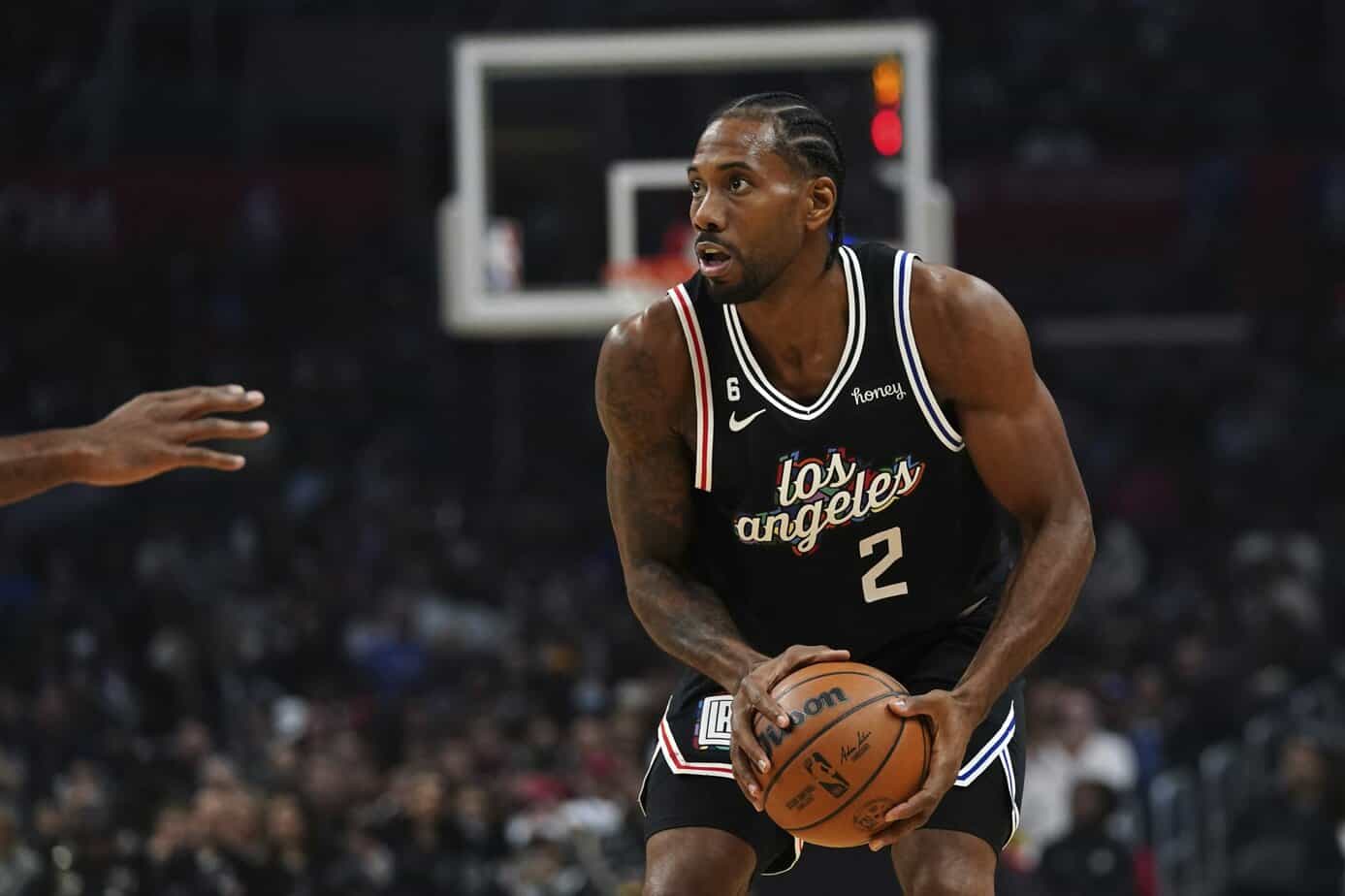



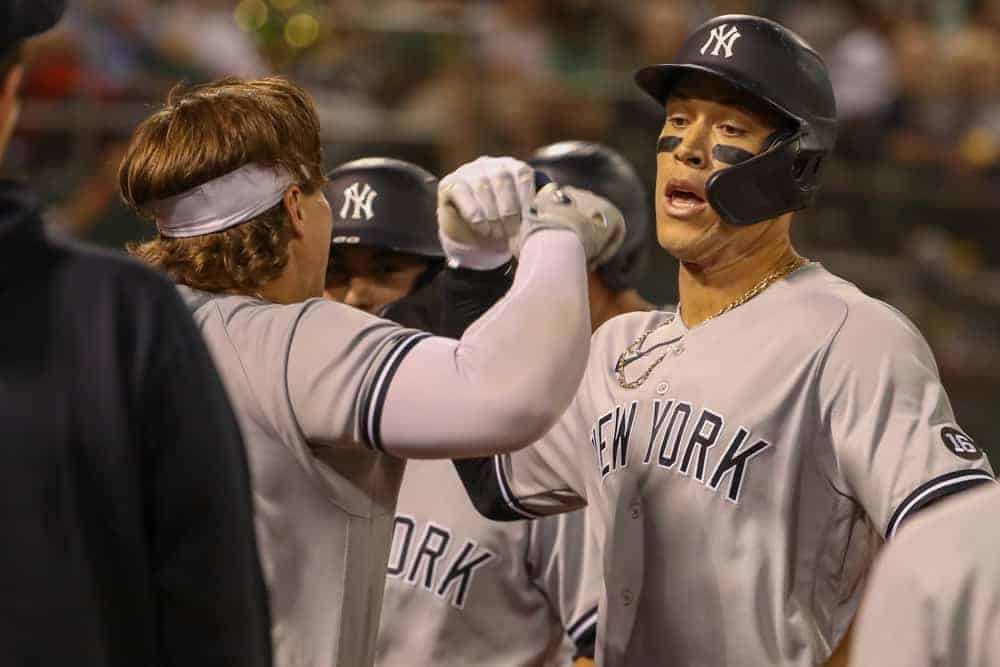




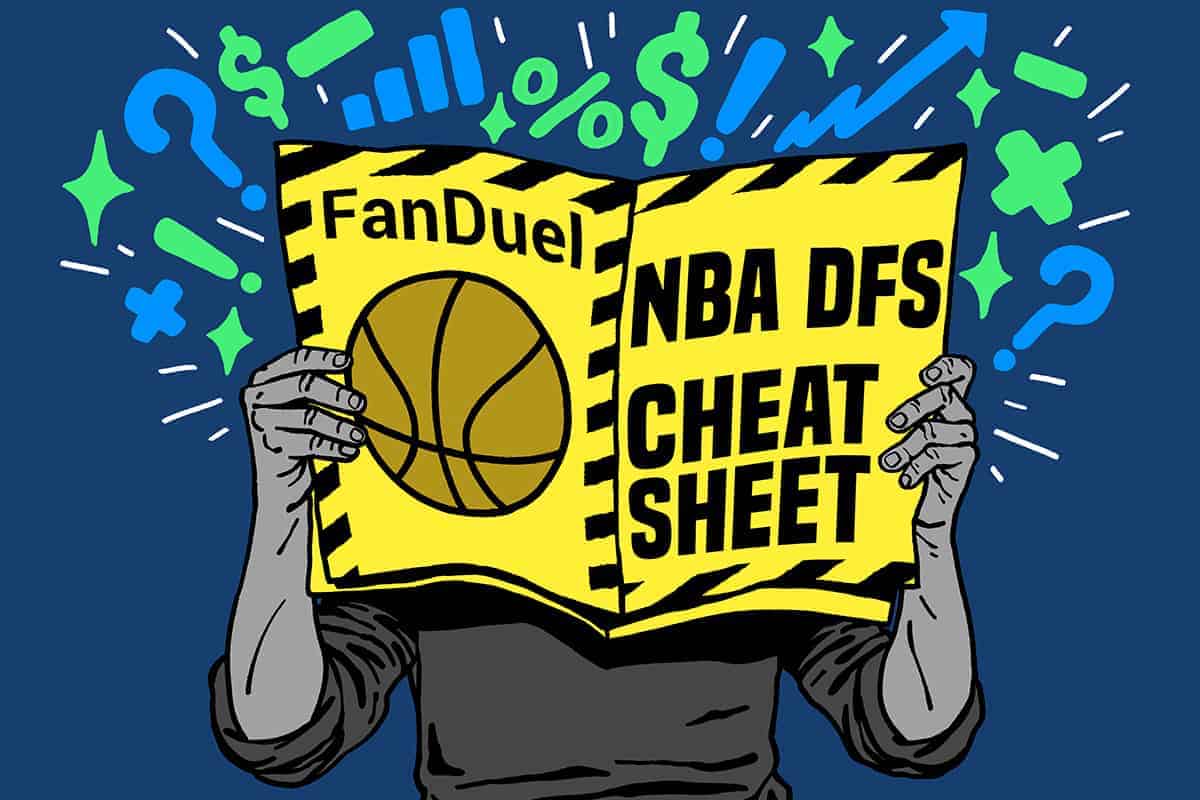






Great article with some very progressive and forward thinking. My question would be; how does an intermediate player apply this information and formulate projections? I agree that all great DFS players have their own projections system, but are there basic steps for one to develop their own?
100% agree with the person who commented before me. also, “updating your algorithms..”…? uhhh, i dont have any algorithms lol. is this bad?
I agree with you guys, I’d love to be able to create projections. However I’m obtuse in this area. I think I have a set of criteria I would like to use, but have absolutely no idea of how to apply it.
Looks like good advice to me. I’m ready to roll.
Thank you so much. Great idea having rankings, too.
Great article! If you had to purchase projections from a highly creditable source to get started what are a couple of sites that you would suggest?
Thanks for the info on this (and the whole site, actually). I really appreciate you sharing your dfs knowledge with all of us dfs players.
Absolutely agree with using Vegas, except…
I feel as the amount of information, that IS NOT game related, like how much money is bet on each team historically, etc., skews the numbers. For example, betting the Patriots against the spread has been profitable over the last 16 years. So the ‘houses’ knowing this adjust the numbers the to entice betting on the other side of the bet, thereby throwing off projections based on those numbers.
Also, in basketball, taking pace differentials and making adjustments for home court at times shows numbers that are more in line with actual results. How much are projections skewed based on how over/unders are bet is a question that if figured out, can make you a lot of money!